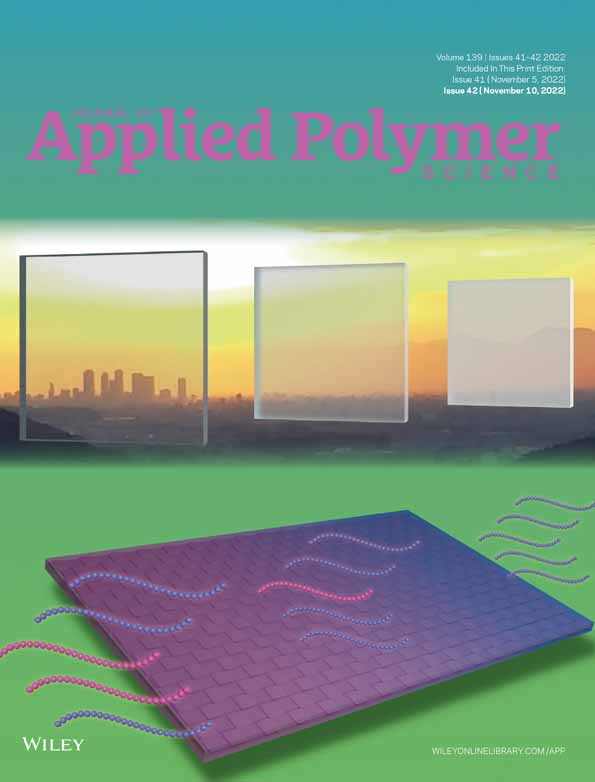An innovative approach to develop self-healing materials from commercial tire-grade elastomers
Sukdeb Saha, Vivek K. Srivastava and Raksh Vir Jasra contributed equally to this work.
Abstract
In the present work, a solid state environment-friendly methodology has been adopted to produce self-healing elastomers using commercial tire-grade polybutadiene rubber (BR) and butyl rubber (IIR). The elastomeric chains were directly grafted with optimized dosages of maleic anhydride followed by reactive mixing with ring opening amine-based adducts (e.g., 3-Amino-1, 2, 4-triazole) to create acid/amide-based supramolecular cooperative hydrogen bonds between elastomer chains, without any adverse effect on the intrinsic properties of the elastomers. Thus, modified elastomers in gum state were found to be have supramolecular cross-linking, that is, without applying any conventional vulcanizing agents. The tensile strength and tensile modulus of Modified BR, that is, BR-g-MAH (Tz) were enhanced by ~3.5% and ~7.5% respectively compared to commercial BR due to incorporation of hydrogen bonding network. The modified elastomers were also found to be thermo-responsive in which micro-cracks were healed in presence of thermal stimuli. Such healing could have been observed due to presence of reversible hydrogen-bonding based dissociation and association phenomenon. The thermo-reversible supramolecular hydrogen bonding was observed in 1H NMR spectroscopy as well. Furthermore, such modified BR, when utilized in different pneumatic tire formulations, significantly improvement in dynamic property was observed as compared to tire formulation made using commercial grade BR. The modified elastomer showed potential to replace the commercial-grade elastomers for various conventional elastomers applications especially in tire sidewalls, tire tread etc. Additionally, such modified BR may improve tire life cycle, and thereby, reduces tire-waste generation. It may also find applications in non-tire sectors like conveyer belts, sealing joints, impact protection etc.
Open Research
DATA AVAILABILITY STATEMENT
The data that support the findings of this study are available from the corresponding author upon reasonable request.




